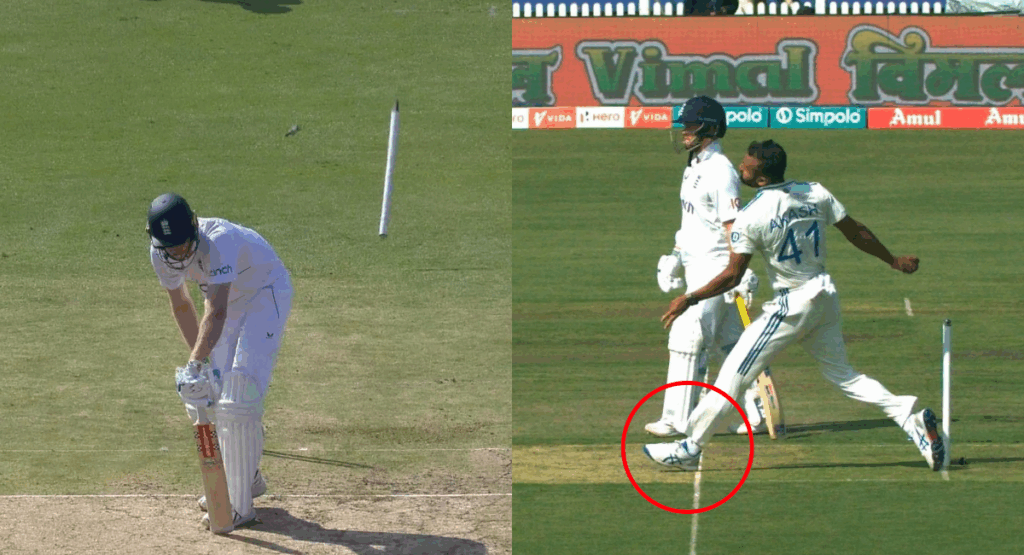
Akash Deep’s No-Ball Controversy has taken center stage in the cricketing world following the second Test between India and England at Edgbaston. The young Indian pacer bowled a dream delivery to dismiss Joe Root, but what followed wasn’t just a celebration; it was a storm of confusion. Therefore, when replays suggested a possible back-foot no-ball, fans and experts began questioning the legality of the delivery. As the debate intensified, the MCC cricket’s lawmaker finally stepped in to bring clarity.
To kick things off, Akash Deep delivered a stunning clean-bowled to Joe Root with an incredible delivery that left the English team in shock. However, upon watching the replays, many noticed that Deep’s back foot seemed to land outside the return crease. Consequently, questions were raised about whether the delivery should have been called a no-ball.
Despite all the buzz, neither the on-field umpires nor the third umpire raised any issues. As a result, social media was abuzz, with fans and former players expressing doubt over the call. Was it legal? Or had a major decision gone unnoticed?
Amid the growing debate, MCC released a statement to clear things up. They claim that the delivery was entirely legal under Law 21.5.1. Significantly, the rule highlights that what matters is where the bowler’s back foot first lands, not where it ends up after sliding.
In Deep’s case, his foot initially made contact inside the return crease. Although it appeared to cross the line later, that movement occurred after the legal landing point. Thus, the delivery complied with the law, and the decision to dismiss Root was correct.
Meanwhile, reactions from the cricketing community were split. Former England batter Jonathan Trott was quick to voice his concern, stating that Deep’s back foot breached the crease line. On the other hand, Ravi Shastri took a more composed approach, defending the umpires and reinforcing the idea that only the foot’s initial point of contact matters.
Additionally, the third umpire’s silence at that moment backs up the MCC’s perspective. It shows that the officials followed the law and made the right call. Looking at the bigger picture, this dismissal played a key role in India’s dominant win. At the time, England were already struggling in their chase of 608 runs. Deep’s early breakthrough shifted the momentum in India’s favor. Eventually, England collapsed to 271, and India sealed a massive 336-run victory, leveling the series 1-1.
Even so, the incident became a topic of heated discussion not because of the outcome, but because it tested how well the game applies its own rules in real-time. Furthermore, this episode offers a valuable reminder. In today’s era of ultra-slow replays and endless scrutiny, it’s easy to judge a moment visually. However, cricket still depends on the written law. The MCC’s response emphasizes that an accurate understanding of the rules is crucial, not just for players and officials, but for fans too.
As technology advances, so must our interpretation of the game. This controversy, while short-lived, showed the importance of clear rule enforcement and timely communication.
In conclusion, Akash Deep’s No-Ball Controversy may have created confusion, but the MCC’s explanation has firmly put the matter to rest. By confirming that the bowler’s foot landed legally, MCC reminded everyone of the importance of precision and rule clarity. Going forward, this incident will serve as a learning point for all, reinforcing how essential it is to pair visual analysis with legal understanding in modern cricket.

